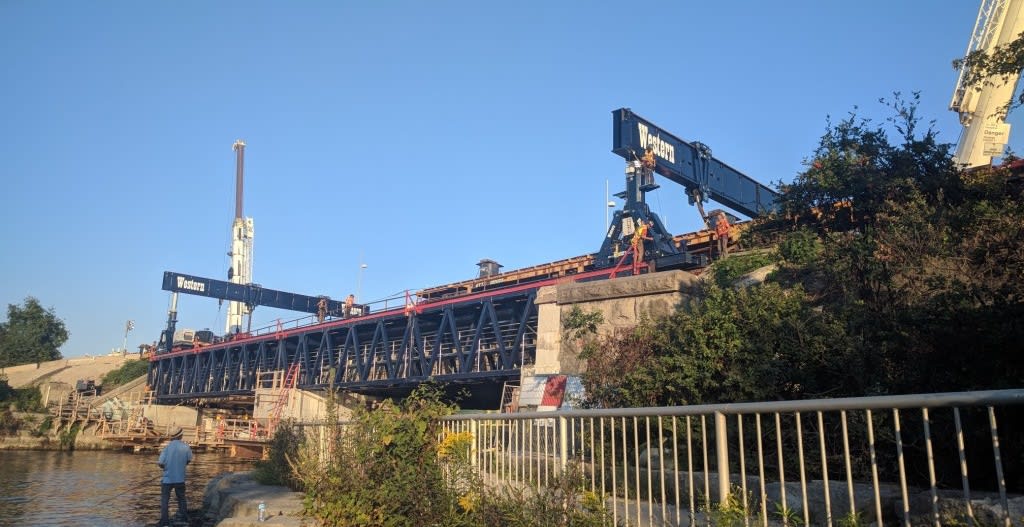Bridging together the past and the future
Construction crews work to restore vital pieces of Canadian history along Lakeshore rail corridors
Sep 20, 2018
If you travel along the Lakeshore West rail corridor on any given weekend this fall, you’ll likely notice a bustling construction site filled with equipment and engineers.
For nine weekends, they are working around the clock to give new life to several century old overpasses, including the historic Humber River Bridge.
Built in 1911, the Humber River Bridge (not to be confused with the 24-year-old Humber Bay Arch Bridge) has withstood the test of time, until now. The structure, which crosses the mouth of the Humber River, is approaching the end of its life cycle and requires some much needed repairs.
It’s one of five steel bridges undergoing renovations on both the Lakeshore East and West rail corridors but make no mistake, these aren’t just ordinary bridges. They are a part of Canadian history.
The construction methods and materials date back to the late 19th and early-20th century. Back then, they were part of the Grand Trunk Railway, a major railroad that connected Toronto to Montreal. By 1859, it stretched as far west as Sarnia and as far east as Portland, Maine. By 1869, some considered it the largest railway in the world.
“It is fascinating to see how bridge construction methods have changed over time,” said project coordinator Michael Szewczyk. “The cleverness of the designers is exhibited by their ability to achieve such complex shapes with such basic structural steel sections.”
When the bridges were first constructed, large girders that support the bridges had to be manufactured using smaller plates, tighter angles and smaller channels.
Szewczyk and his team have put a lot of thought and consideration into the historic importance of the existing structures with their work, especially with the design decisions. They’ve chosen to construct the architectural features of the concrete to help preserve the original design aesthetic while rehabilitating the aging bridges.
“When we work on a structure like these, we make a mark in history that will extend long beyond our own lives,” adds Szewczyk. “It is very important that our work is of the highest quality.”
The work Metrolinx is doing is necessary to maintain the ever-expanding passenger rail services on the Lakeshore rail corridors. The existing steel spans at the Humber River are being replaced and raised to bring the structure to a good state of repair, to improve the vertical clearance to the river and to achieve the benefits of a renewed waterproofing system.
Track work on all bridges will include new rail and concrete ties on the bridges and the approaches, to extend the life of the track and avoid the need to return to this site for work in the foreseeable future.
“I hope the generations that follow regard these structures, and the work we have undertaken to renew and restore them, with the same admiration as we do looking back on those that constructed them anew in 1911,” said Szewczyk.
More information on the GO Transit service and community impacts while work on the bridges is taking place can be found here.
by Nitish Bissonauth Metrolinx bilingual editorial content advisor
